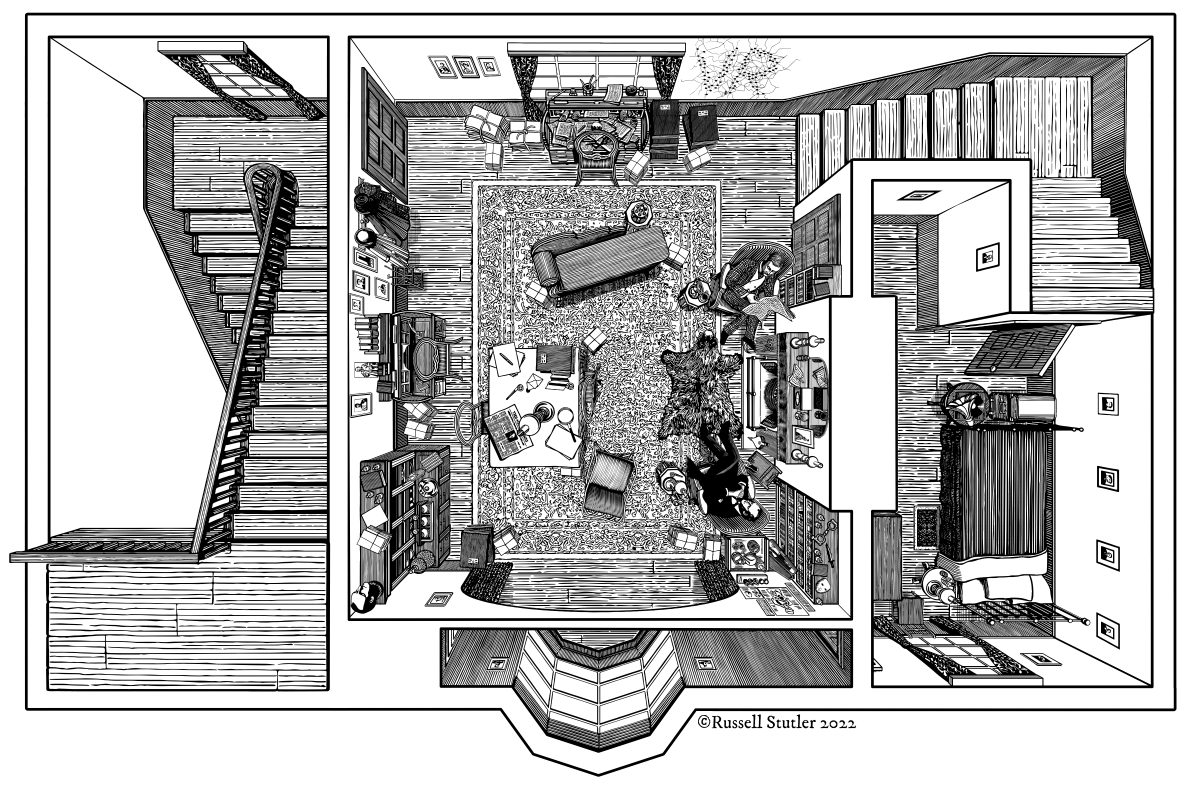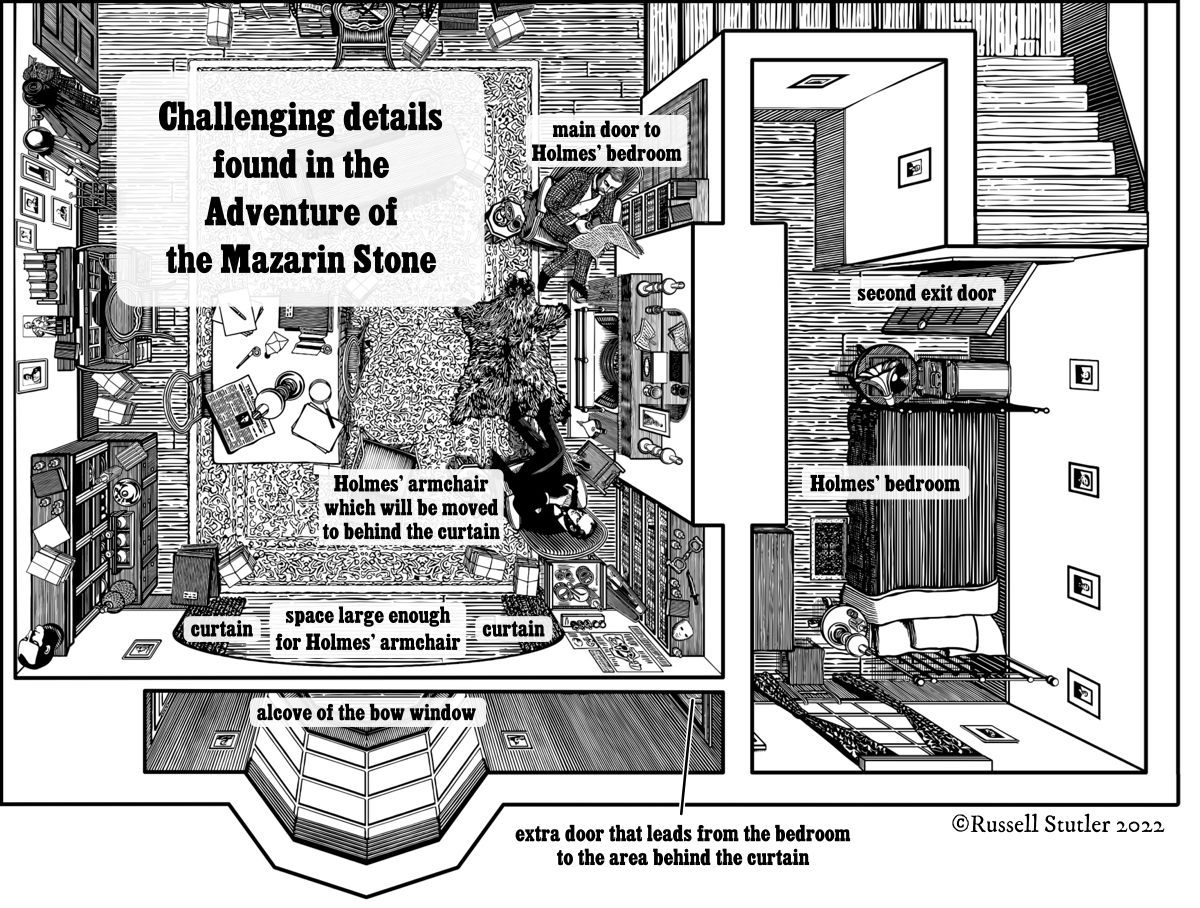1995: The first version
I drew the first version of the 221B Baker Street illustration in the spring of 1995 in Tokyo.
This was immediately after reading the entire collection of sixty Sherlock Holmes stories by Sir Arthur Conan Doyle for the first time.
I was thirty eight years old at the time.
The books were not illustrated, but the flat at 221B Baker Street flat began to take shape in my imagination.
I read all the stories twice and took notes in the blank pages of every detail I could find that had to do with the famous flat.
I even roughed out a basic sketch in one of the books which I constantly erased and re-drew as more details emerged.
Then I drew the image on a large sheet of paper in black ink with technical pens which I still had from my art school days many years before.
My day job was teaching English to junior and senior high school students in Tokyo, so I printed the illustration up along with a work sheet that contained a list of all the elements for my students to circle.
Now the illustration had a practical purpose.
That year I sent a copy of the illustration and its accompanying quiz to the Japan Sherlock Holmes Club. They published it in The World of Holmes No. 18 which was their regular publication. The illustration itself was printed as a separate insert because of its size.

|
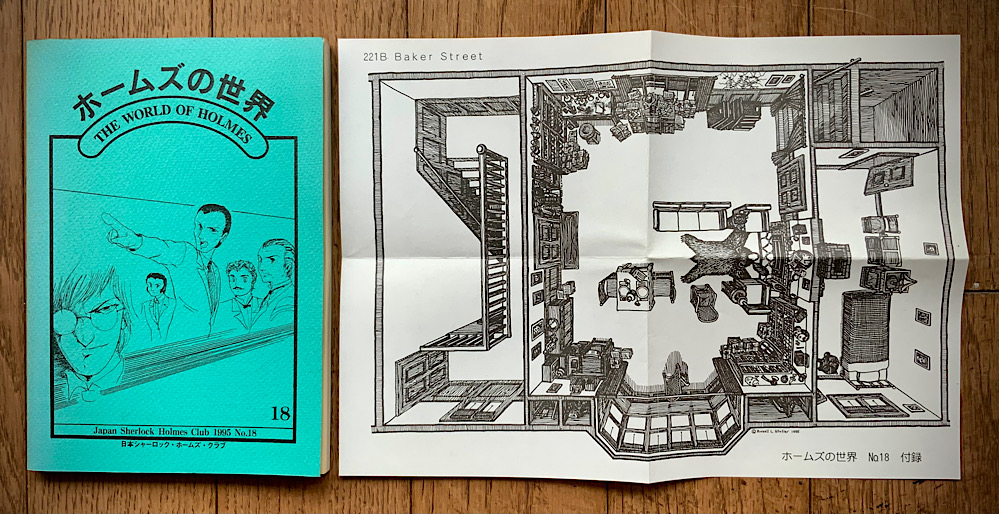
The Japan Sherlock Holmes Club The World of Holmes No. 18
|
This was the first time the illustration appeared in a print publication, and I was thrilled.
Later I scanned the original illustration, added a parchment background, and uploaded it to my website.
It started started to appear in other publications, websites and at the top of web search results.
Eventually this illustration became the most famous thing I would ever draw.
I am not famous (you probably couldn't even guess my name now without cheating) but my illustration has become well-known among Sherlock Holmes fans all over the world.
Back to the top
2008: The second version
I created the second version in 2008 when I was 51, thirteen years after the first version.
During those thirteen years I had read the stories again and again, and listened to them countless times in audio book form and came across details which should have been reflected in the original illustration.
This version has also apparently been used in some video games; I recall granting permission to several game creators, but they apparently forgot to show me their final product.
This illustration in its first or second version has appeared on many other other web sites in various languages including Sherlockian-Sherlock.com and Smithsonian.com.
It has also appeared in print publications around the world such as the Financial Times in London. That article was free for viewing for a time, but is now behind a paywall, so I can't even read it myself now.
I have several Sherlock Holmes books on my shelf which include this illustration -- in languages I can't read. Some of those books are in the photo to the right.
The illustration has also been displayed in an exhibition in Italy. The photo below came from a video promoting the exhibition.
The exhibition also featured an amazing 3D virtual recreation of the illustration that would allow the viewer to go and explore the different rooms. A screen shot is shown below to the right.
Back to the top
2022: The third version
I created this third version in 2022 at the age of 65.
I drew this one at the suggestion of my brother in California who thought it would be nice to be able to print quality high resolution reproductions of a new version suitable for framing.
This was 27 years after the first edition and 14 years after the second edition.
One could say that this illustration took 27 years, but the actual time I worked on it was three months.
In the previous two editions of the illustration, I drew the various items from imagination.
But this time I based them on the original illustrations which accompanied the stories as they first appeared in The Strand Magazine.
My well-worn copy of The Original Illustrated 'STRAND' Sherlock Holmes never left my desk throughout this project. never left my desk throughout this project.
For elements not found in the Strand Magazine illustrations I used reference photos of Victorian era items.
After I published this third version of the illustration here on my website, requests started coming in for permission to use it in books and publications.
It first appeared in a text book published by NHK in Japan which accompanied their TV series about Sherlock Holmes (seen in the photo above).
It was also published as a supplementary poster which was included in a beautiful boxed set of hardbound books published in China that contains the entire collection of Sherlock Holmes stories in Chinese.
The illustration was also published in a few other books which I have not yet seen. I always ask publishers to send me a copy of the finished product. Unfortunately some forget to do that.
Back to the top
Confronting the elephant in the room
This illustration deals with the unique features found in The Adventure of the Mazarin Stone.
And it is the only depiction I know of that reconciles these challenges with the other stories.
The Adventure of the Mazarin Stone can be found in the final collection of Sherlock Holmes stories called The Case-Book of Sherlock Holmes which was published between 1921 and 1927.
This collection was under copyright in the United States until January 1, 2023. Now all of the stories are in the public domain.
So what are the unique features in The Adventure of the Mazarin Stone?
- A curtain hanging in front of the alcove of the bow window.
- A life-size facsimile (dummy) of Sherlock Holmes sitting in an armchair partially visible behind the curtain.
- Enough space between the curtain and the window to allow Holmes to replace the dummy with himself.
- A second door in the bedroom which allows Watson to exit undetected.
- A third door which leads from the bedroom to the bow window.
This story stands out from the others in several ways.
- It is told in the third person, which only happened in one other story, His Last Bow.
- The entire story takes place in one room because it was based on a one-act stage play.
- The plot is practically all dialogue.
- The solution relies on convenient gimmicks: secret passages, a dummy replica of Sherlock Holmes, and a recently invented gramophone.
For those who are unfamiliar with this story, Watson is visiting Holmes who is waiting for a dangerous villain to drop in, so Watson must quickly leave via a secret exit in Holmes' bedroom to summon the police. Later, the villain and his assistant are standing in the sitting room near a harmless dummy replica of Holmes which sits partially in view behind a curtain in the bow window. After Holmes goes into his bedroom to play the violin, the villain brings out from a secret pocket the Mazarin Stone (diamond) which he had stolen and shows it to his assistant who brings it closer to the window (and the dummy) to get a better look at it. Holmes, who has now replaced the dummy, quickly snatches the stone and points a gun at the two. Game over. The violin playing had been coming from a gramophone, and Holmes had secretly entered the bow window alcove via a secret door from his bedroom.
A web search will reveal that The Adventure of the Mazarin Stone is the least popular of all the Sherlock Holmes stories.
Practically all of the artists who have set out to draw this place or build a three dimensional reconstruction have chosen to ignore this story, and frankly I can't blame them. Why go through all the hassle just to accommodate one odd and unpopular story?
But The Adventure of the Mazarin Stone is part of the official collection of Sherlock Holmes stories by Sir Arthur Conan Doyle, so I could not ignore it. As a matter of fact, it captivated me and compelled me to create the illustration back in 1995.
This elephant in the room is what sets my illustration apart from the others.
The 221B Baker Street illustration by Ernest H. Short published in Strand Magazine in 1950 addresses some of the challenges in The Adventure of the Mazarin Stone but doesn't doesn't include the bow window, and puts Watson's bedroom next to Holmes' bedroom instead of on the floor above where it should be.
I've posted my notes on every detail I've found so you can judge for yourself.
Back to the top
Two Mazarin Stones
Arthur Conan Doyle also wrote a stage plays. One of these was a one-act play called The Crown Diamond: An Evening with Sherlock Holmes which was performed in 1921.
The manuscript was originally called The Adventure of the Mazarin Diamond.
According to the script, the scene is Mr Holmes's room at Baker Street, and here is a description of the room:
It presents the usual features, but there is deep bow window to it, and across there is drawn a curtain running upon a brass rod fastened across eight feet above the ground, and enclosing recess of the window.
In the play, the lights suddenly go out and Holmes dashes out of his room in the dark to replace the dummy.
This was done by a special device (another convenient gimmick) which could turn off all the lights — which were electric in 1921.
When Doyle wrote the The Adventure of the Mazarin Stone which was published in The Strand Magazine a few months later, he did not use the electric device but opted for secret doors instead.
So I suppose that every artist and theatrical set builder who omits these extra doors can appeal to the The Crown Diamond for authenticity — although the omission of a bow window is still inexcusable as it also appears in The Adventure of the Beryl Cornet.
But the stage play is not in the canon of sixty stories, so I was obliged to make my illustration compatible with The Adventure of the Mazarin Stone.
If you would like to know more about the stage plays as well as other Sherlock Holmes material by Arthur Conan Doyle which are outside the canon of stories, there is a fascinating book called The Uncollected Sherlock Holmes which really ought to be in every Sherlockian's library.
Back to the top
What is different in the third version?
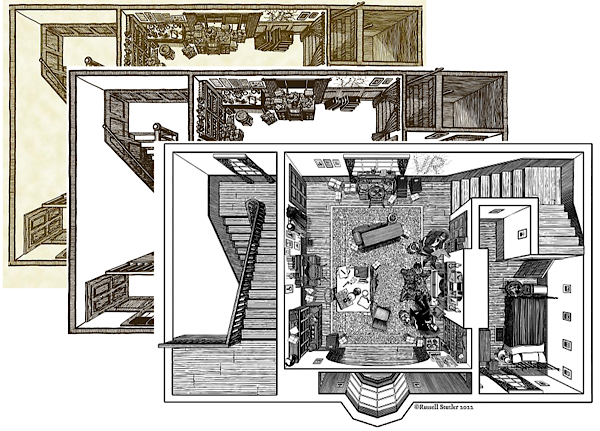 The most obvious difference is the inclusion of the occupants, Holmes and Watson. Nearly all other depictions leave them out. The most obvious difference is the inclusion of the occupants, Holmes and Watson. Nearly all other depictions leave them out.
Watson's face appears very different throughout the stories so I based my drawing on several of the Sidney Paget illustrations. For Holmes' face (which also has a bit of variety between the stories) I used a typical representation which is found in a Sidney Paget illustration for The Adventure of the Norwood Builder.
For more about Holmes' facial features I have a section below called The face of Sherlock Holmes.
There is now a bow window as mentioned in The Adventure of the Beryl Cornet and The Adventure of the Mazarin Stone instead of a bay window.
There is now a safe which is mentioned in The Adventure of the Six Napoleons in the wall hidden behind the curtain. This omission was conveyed to me in 2013 by some 4th grade students and their teacher. I suggested that the safe was hidden, but finally fixed the problem by the time these clever students were ready to graduate from college. Sorry for the delay!
Actually, the door of the safe which is only partially visible in the illustration could be a regular door to a small room which contains the safe. This room would contain the window which is above the front door in my image below of the exterior of 221B Baker Street.
Holmes' chamber upstairs has a second door which opens to the hallway in The Adventure of the Beryl Cornet so now the hallway stairs go up another floor.
In The Five Orange Pips there was apparently only one vacant chair for a visitor to sit in, so I made sure to limit the number of chairs to:
- Two arm chairs as mentioned in The Adventure of the Three Gables
- A basket chair from The Adventure of the Blue Carbuncle
- A set of four rounded back wooden chairs found in several of the Sidney Paget illustrations at the dining table (two have been moved to the desks)
- A wooden chair with a square back (for hanging a hat in the The Adventure of the Blue Carbuncle) in Holmes' room which could be easily brought out to the sitting room when needed.
The extra arm chair in the bow window in The Mazarin Stone has also been removed. Apparently that chair was Holmes' own arm chair as Watson's armchair was still in its regular place.
The cupboard containing the oranges in The Five Orange Pips is now part of the sideboard.
The coal scuttle from The Musgrave Ritual and The Adventure of the Mazarin Stone is the box type with lid which could more easily be used to store cigars, pipes and tobacco rather the open bucket type used in the previous illustrations.
The spirit case is now a tantalus which was common in the Victorian era.
The cigar case is a portable case which was common at the time which could easily be thrown as it was in A Scandal in Bohemia.
In order to keep all the rooms in the one building, Mrs. Hudson's room is on the floor upstairs, either on the same floor as Watson's bedroom and Holmes' chamber or on the floor above that.
The bearskin heathrug conforms to the Sidney Paget depiction which appears in The Adventure of the Priory School
The curtain rail in front of the bow window in The Mazarin Stone is supported by the wall above an arch.
There are now a hundred bullet-pocks in the V.R. corresponding to the hundred Boxer cartridges Holmes fired into the wall in The Musgrave Ritual.
The large tin box in The Musgrave Ritual is based on the original Strand illustration and has a very distinct design.
The sofa design widely varies throughout the stories but the orientation with the head rest on the left is demanded in a scene in The Adventure of the Cardboard Box, a story which appears in some editions and not others. The same scene is also duplicated in some editions of The Resident Patient where The Adventure of the Cardboard Box is omitted. The illustration in The Adventure of the Cardboard Box is my source for this depiction.
There is a reading lamp (a.k.a. student lamp) near Holmes' chair which can direct light to a vacant chair nearby which appears in The Five Orange Pips.
As in the second edition I included the "facsimile" of Sherlock Holmes' head from the The Adventure of the Mazarin Stone which does not have bullet hole in it. The wax head in the The Adventure of the Empty House had a bullet hole, but that sculpture was only wax-colored because it was only required to cast a shadow on the screen of the window, while the Mazarin Stone head was realistic and convincing enough to fool people who saw it even at close range (and the head was detachable as Billy demonstrated in the story).
I started out with the intention of conforming the general layout in the third version to a terraced house which seems to be the trend among recent 221B Baker Street depictions, including movies and TV dramas. But after some research I rejected this idea as unsupported and causing more problems than it solves. See the section below, Was 221B Baker Street a Terraced House? for more details.
Back to the top
What in the world am I looking at?
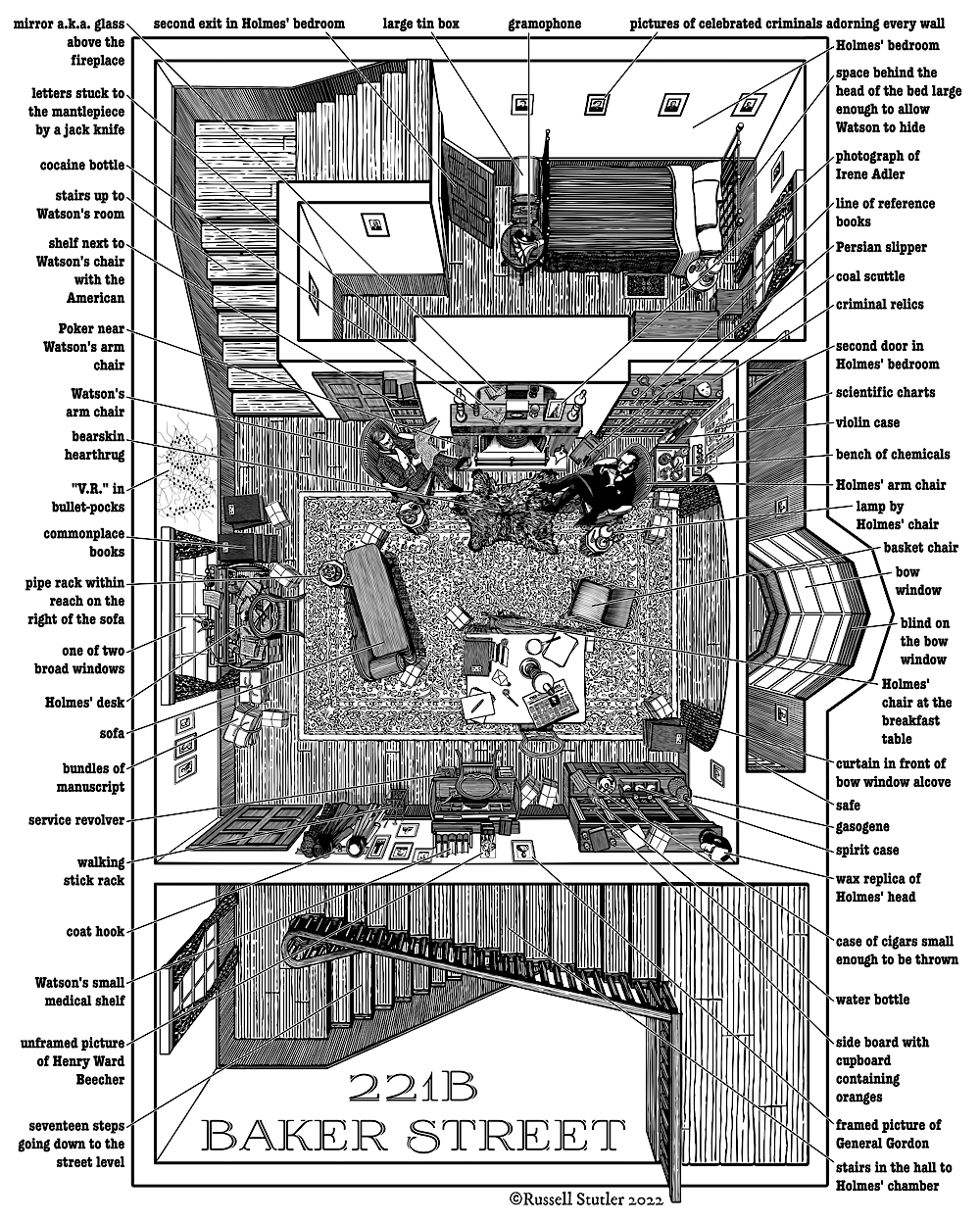
Back to the top
A few things up close
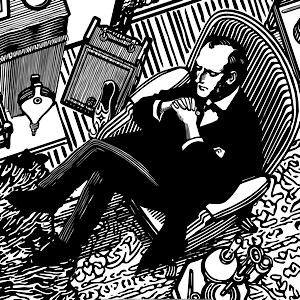
|
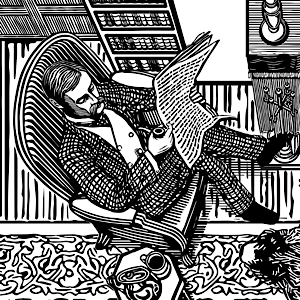
|
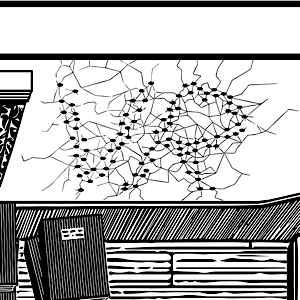
|
|
Sherlock Holmes in deep thought in his arm chair
|
Watson in his arm chair reading the newspaper with a pipe in his hand
|
"V.R." in bullet-pocks on the wall opposite Holmes' arm chair: The Musgrave Ritual
|

|
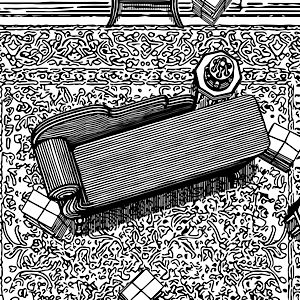
|
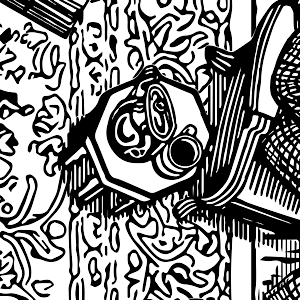
|
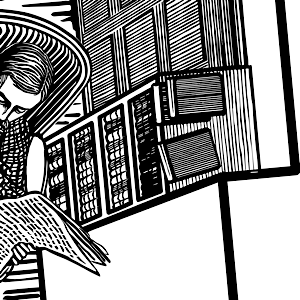
|
|
A sofa with a pipe rack within reach on the right: The Adventure of the Blue Carbuncle
|
Small octagon tables: several Sidney Paget illustrations
|
A shelf next to Watson's chair containing the American Encyclopedia: The Five Orange Pips
|

|
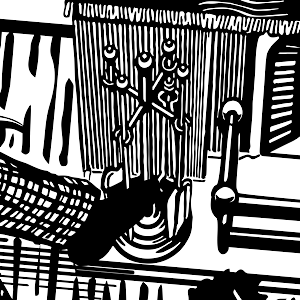
|
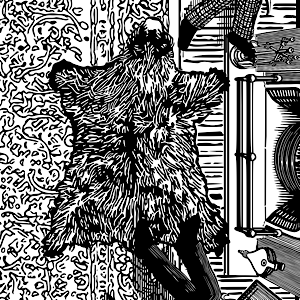
|
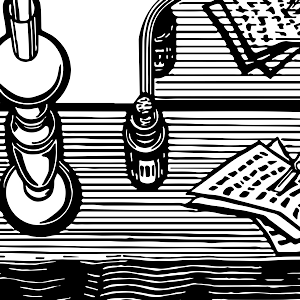
|
|
A poker near Watson's arm chair: The Adventure of the Three Gables
|
A bearskin hearthrug near the table: The Adventure of the Priory School
|
A cocaine bottle on the mantelpiece: The Sign of Four
|

|
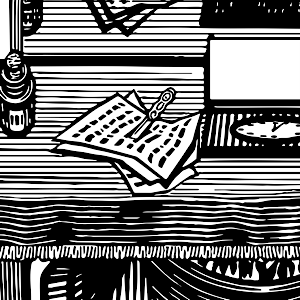
|
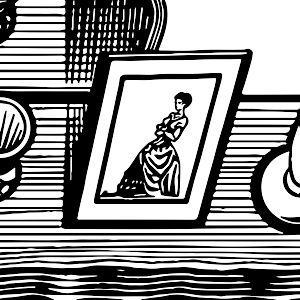
|
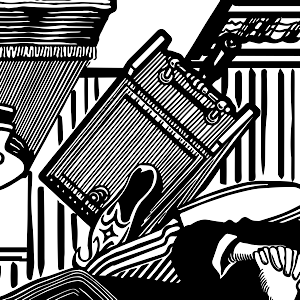
|
|
Unanswered letters transfixed by a jack-knife to the center of mantelpiece: The Musgrave Ritual
|
A photo of Irene Adler in evening dress: A Scandal in Bohemia
|
A coal scuttle containing cigars, pipes and tobacco: The Musgrave Ritual and The Adventure of the Mazarin Stone
|

|
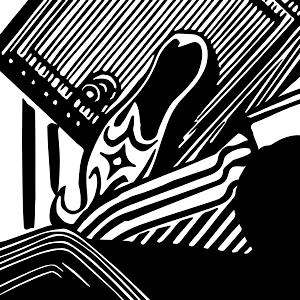
|
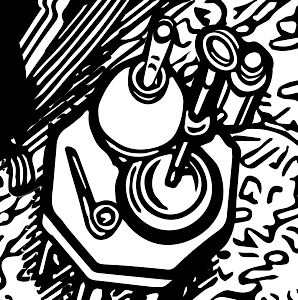
|
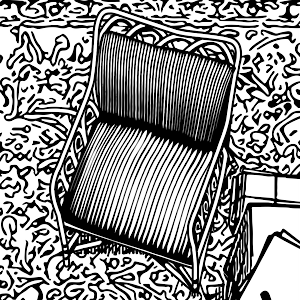
|
|
A Persian slipper with tobacco in the toe end: The Musgrave Ritual
|
A reading lamp which Holmes turned away from himself and towards a vacant chair: The Five Orange Pips
|
A basket chair: The Adventure of the Blue Carbuncle
|

|
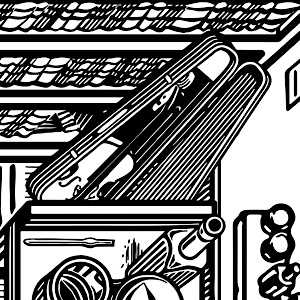
|
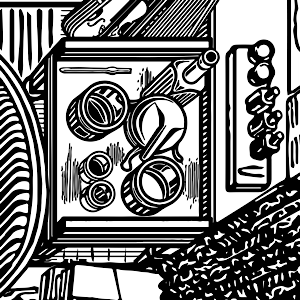
|
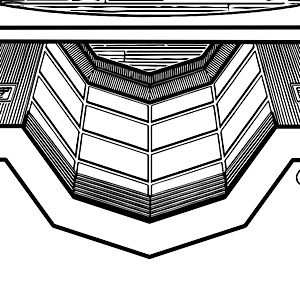
|
|
A violin case leaning in the corner: The Adventure of the Mazarin Stone
|
An acid-charred bench of chemicals: The Adventure of the Naval Treaty and The Adventure of the Mazarin Stone
|
A bow window: Adventure of the Beryl Coronet and The Adventure of the Mazarin Stone
|

|
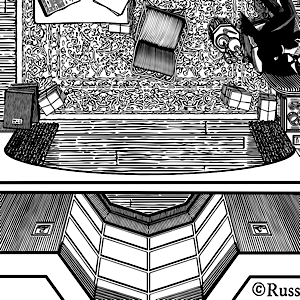
|
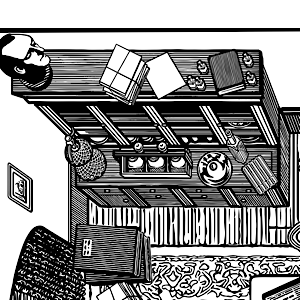
|
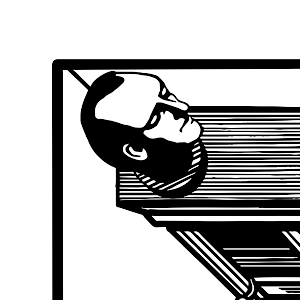
|
|
A curtain in front of the bow window alcove: The Adventure of the Mazarin Stone
|
A sideboard: The Five Orange Pips and The Adventure of the Beryl Cornet
|
A detachable facsimile of Holmes' head: The Adventure of the Mazarin Stone
|

|
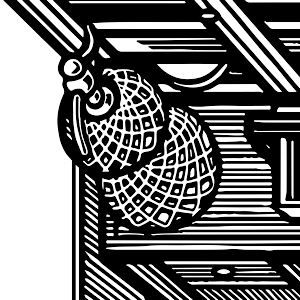
|
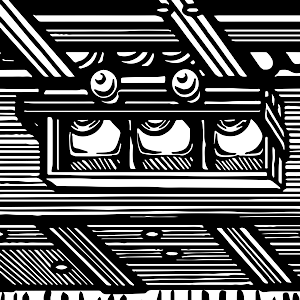
|
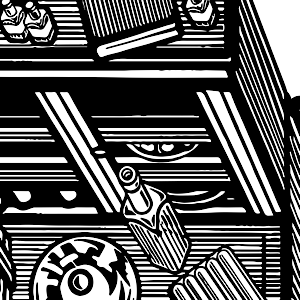
|
|
A gasogene in the corner: A Scandal in Bohemia
|
A spirit case in the corner: A Scandal in Bohemia
|
A cupboard containing oranges: The Five Orange Pips
|

|
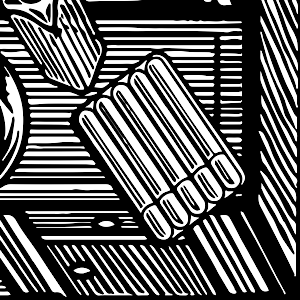
|
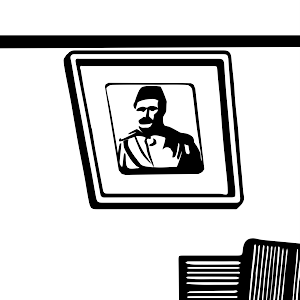
|
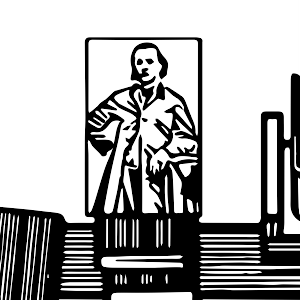
|
|
A case of cigars small enough to be thrown: A Scandal in Bohemia
|
A framed picture of General Gordon: The Resident Patient and The Adventure of the Cardboard Box
|
An unframed picture of Henry Ward Beecher: The Resident Patient and The Adventure of the Cardboard Box
|

|
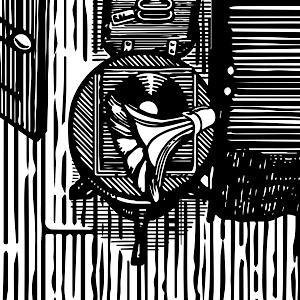
|
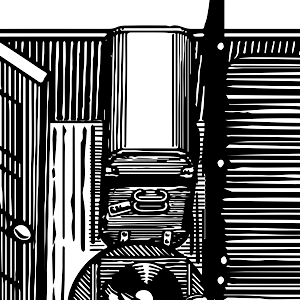
|
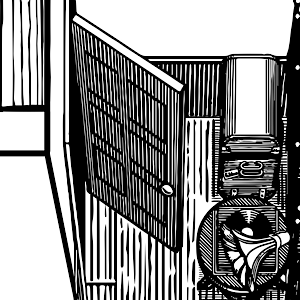
|
|
A gramophone in Holmes' bedroom: The Adventure of the Mazarin Stone
|
A large tin box in Holmes' bedroom: The Musgrave Ritual
|
A second exit in Holmes' bedroom: The Adventure of the Mazarin Stone
|

|
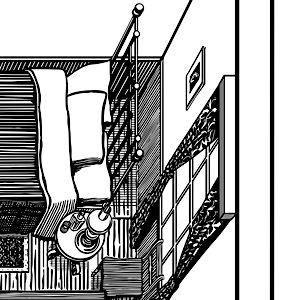
|
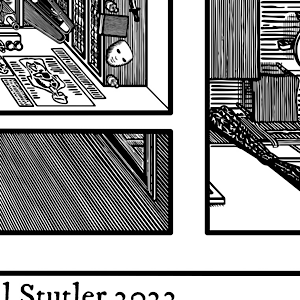
|
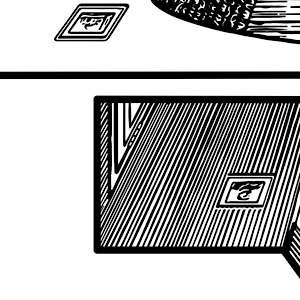
|
|
A space behind the head of the bed large enough to allow Watson to hide: The Adventure of the Dying Detective
|
A second door in Holmes' bedroom leading to the bow window: The Adventure of the Mazarin Stone
|
Door to a safe: The Adventure of the Six Napoleons
|
Back to the top
Some notes related to elements in the Baker Street flat:
 |
| A Study in Scarlet |
a couple of bedrooms
a large airy sitting room
two broad windows
a sofa in the sitting room
an arm chair
a table for dinner
stairs going down to the street level
Holmes' door at top of stairs
a passage at the top of the stairs
the landlady passes their door to go to bed |
| The Sign of Four |
a cocaine bottle on corner of mantelpiece
a velvet lined arm chair
Watson's room upstairs of the sitting room |
| A Scandal in Bohemia |
a window blind which shows Holmes' silhouette as he passes in front of it
a case of cigars small enough to be thrown
a gasogene and spirit case in the corner
seventeen steps leading up from the hall
stairs and a passage outside the door from which they could hear the steps of a visitor |
| A Case of Identity |
a pipe rack |
| The Five Orange Pips |
chairs on either side of the fireplace
a passage outside the door from which they could hear the step of a visitor
a lamp by Holmes' chair which he turned away from himself and towards a vacant chair
a single vacant chair on which a new-comer must sit
a coat hook
a sideboard
a bottle of water on the sideboard
a shelf next to Watson's chair containing the American Encyclopedia
a cupboard containing oranges
Watson's room upstairs of the sitting room [1] |
| The Adventure of the Blue Carbuncle |
a pipe rack within reach on the right of the sofa
a wooden chair
a basket chair |
| The Adventure of the Speckled Band |
Watson's room upstairs of the sitting room
a mantelpiece with a clock in Watson's room |
| The Adventure of the Noble Bachelor |
two easy chairs
a line of reference books beside the mantelpiece. |
| The Adventure of the Beryl Cornet |
a bow window [2]
the window is big enough for Watson to stand in
the window is big enough for Holmes to look over Watson's shoulder and see the street below
Holmes' chamber upstairs of the sitting room
a mirror (called a glass) above the fireplace
a sideboard
a joint of beef and rounds of bread upon the sideboard plus a knife to slice the beef
a hall door upstairs of the sitting room (apparently to Holmes' chamber)
Watson's room upstairs of the sitting room
|
| The Musgrave Ritual |
a coal scuttle with cigars
a Persian slipper with tobacco in the toe end
unanswered correspondence transfixed by a jack-knife to the center of the wooden mantelpiece
V.R. in bullet-pocks on the wall opposite Holmes' arm chair [3]
chemicals and of criminal relics in "unlikely positions"
bundles of manuscript in every corner
a large tin box in Holmes' bedroom. |
| The Resident Patient or The Adventure of the Cardboard Box [4] |
a framed picture of General Gordon with a corresponding bare space
an unframed picture of Henry Ward Beecher which stands on top of Watson's books
Watson could see these from his chair
Holmes could see Watson's face from his position curled upon the sofa |
| The Adventure of the Naval Treaty |
a side table for working on a chemical investigation
a spare bedroom |
| The Adventure of the Empty House |
a pipe rack |
| The Adventure of the Priory School |
a bearskin hearthrug near the table
a table between the door and the hearthrug |
| The Adventure of Black Peter |
a room just off the sitting room |
| The Adventure of the Six Napoleons |
a lumber room upstairs of the sitting room which was packed with daily papers
door to the safe |
| The Hound of the Baskervilles |
Holmes' chair at the breakfast table faces away from the hearthrug
the sofa is a settee
Watson has a small medical shelf of books placed high |
| The Adventure of the Dying Detective |
pictures of celebrated criminals adorning every wall in Holmes' room
a litter of pipes, tobacco-pouches, syringes, penknives and revolver-cartridges scattered over the mantelpiece
a black and white ivory box on mantelpiece
a space behind the head of the bed large enough to allow Watson to hide |
| The Adventure of the Mazarin Stone |
scientific charts on the wall
an acid-charred bench of chemicals
a violin case leaning in corner
a coal scuttle containing pipes and tobacco
a gasogene and cigar case together in their old place (the corner, according to A Scandal in Bohemia)
a waiting room downstairs
a bow window
a blind on the bow window
a bow window alcove large enough to hold a chair
a curtain in front of this alcove
Holmes' bedroom just off the sitting room [5]
a second exit in Holmes' bedroom
a gramophone in Holmes' bedroom
a second door in Holmes' bedroom leading to the bow window behind the curtain |
| The Adventure of the Three Gables |
a low arm chair on one side of the fire
another chair opposite it
a table between the door and Holmes' chair
a poker near Watson's arm chair |
| The Problem of Thor Bridge |
the back yard is visible from Watson's room
Watson's room is upstairs of the sitting room |
| The Adventure of the Veiled Lodger |
a pile of commonplace books in the corner
|
Footnotes
[1] The rooms upstairs include Watson's bedroom and Holmes' chamber as well as a lumber room and probably the bath room and toilet (and possibly the rooms of Mrs. Hudson and the servant unless they were on a floor above that).
I would love to make a second illustration depicting those rooms, but there is not enough data; I would be supplying most of the details from my own imagination and speculation.
(back)
[2] Regarding the bow window, we read in A Study in Scarlet that there were two broad windows, but in the same story, Mr. Jefferson Hope after he had been handcuffed, hurled himself through the window and that wood and glass gave way before him.
This seems to imply that there was but one large window and that it was large enough for a man to be tempted to jump through.
In The Sign of Four Watson is standing at the window watching Mary Morstan walking down the street, and later he sat in the window with a book in his hand.
In The Adventure of the Beryl Cornet Watson wrote, ...I stood one morning in our bow window looking down the street and that Holmes stood behind him, looking over his shoulder out the same window, rather than simply look out of a window next to it.
These accounts seem to indicate that they had only one bow window facing the street, and that it was large enough for an adult to stand and sit in it and even jump through it.
This window is always referred to as the window rather than one of the windows, so in order to reconcile the various accounts, I have placed the second window on the other side of the room and made it a regular window and not a bow window.
(back)
[3] Regarding the V.R. in bullet-pocks on the wall, Holmes used a hundred Boxer cartridges to create these initials which means he apparently fired his pistol at the wall one hundred times.
Even one hundred bullets fired into busy, dark Victorian wallpaper might not greatly affect the atmosphere nor the appearance of the room, as Watson reported.
However, if it were a plain plaster wall there would be much greater damage, and large portions of plaster could be blown off had Holmes not been not an expert marksman.
When I created this illustration I abandoned my plans to depict wallpaper so that the V.R. would be visible.
In this third edition I made sure that there were exactly one hundred bullet-pocks.
Thanks to the following websites for the head-up: Home Improvement with Sherlock Holmes and Discovering Arthur Conan Doyle: the Adventure of the Musgrave Ritual.
(back)
[4] Why do these elements appear in both The Adventure of the Cardboard Box and The Resident Patient?
They were originally part of the opening scene of The Adventure of the Cardboard Box as it first appeared in The Strand Magazine.
However, The Adventure of the Cardboard Box was apparently considered unsuitable for the general public because of its graphic description of an illicit love affair, and perhaps because of the box which contained severed ears of the victims.
When the stories were later published in book form, The Adventure of the Cardboard Box was omitted.
But the opening scene was so good, that a book editor inserted it into the beginning of The Resident Patient which had been published in The Strand Magazine after The Adventure of the Cardboard Box.
Then in later books The Adventure of the Cardboard Box returned to its proper place along with its opening scene.
As a result, the scene now appears in either The Adventure of the Cardboard Box or The Resident Patient or both.
(back)
[5] Regarding the location of Holmes' own bedroom, The Adventure of the Beryl Cornet implies that Holmes' chamber is on the floor above the sitting room while The Adventure of the Mazarin Stone puts Holmes' bedroom just off the sitting room where it communicates with the alcove of the bow window.
Apparently Holmes had two rooms for his personal use: his chamber upstairs which contained all of his costumes and props and his bedroom next to the sitting room.
This upstairs chamber could also serve as a lumber room which was dedicated to stacks of newspapers and bundles of manuscript ... which were on no account to be burned, and which could not be put away save by their owner as mentioned in the The Musgrave Ritual.
A lumber room upstairs packed with daily papers is indeed mentioned in The Adventure of the Six Napoleons.
Holmes' bedroom next to the sitting room could be the same room in The Adventure of Black Peter where he had asked two men to wait for a few minutes during a job interview, and my illustration allows for a partition to be set up between the waiting area behind the door and Holmes' belongings.
One of these rooms could also serve as the spare bedroom mentioned in The Adventure of the Naval Treaty; Holmes did not return home that night, so both of his rooms were vacant.
(back)
|
|
Back to the top
Regarding prints
Based on my experience with the first two versions, I imagine that some people would like to own a high resolution print of this illustration.
I personally find very little enjoyment in taking orders and sending out stuff.
This may come as a surprise to those who are familiar with my fountain pen selling activity in the past, but I found that type of work tedious.
The good news is that there is a strong possibility that large high quality prints will be made available for sale through a YouTube Channel called Cigar Ops Featuring Todd Tappe.
This YouTube channel is produced by my brother in America who is willing to handle such things.
I was interviewed for one of the episodes where we talked about this illustration (as well as cigars). There was also a print giveaway for one lucky viewer as well as talk of setting up a store if there is enough interest.
If you would like to see this interview and learn more about getting a nice print, go to Cigar Ops Ep 11: Storied 221B Baker Street Illustration — Enjoying a Partagas 1845 Clasico with the Artist..
Back to the top
Was 221B Baker Street a terraced house?
|

|
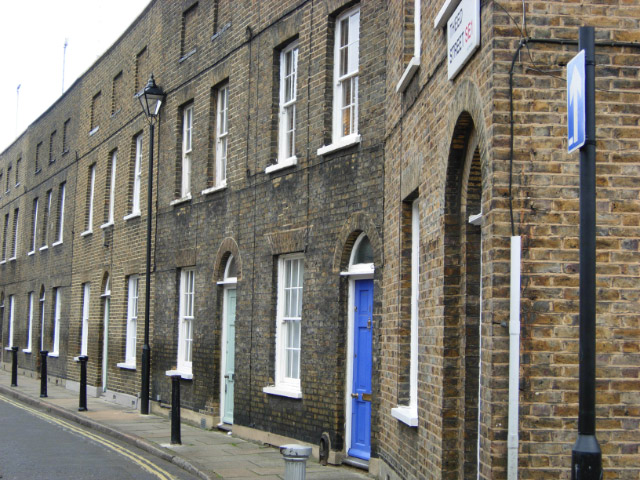
Early 19th-century terraced houses near Waterloo, London
By Stephen McKay, CC BY-SA 2.0, Link
|
Terraced houses, also known as townhouses or row houses, are rows of dwellings of uniform height and similar appearance which share common walls between them.
They were a typical dwelling for the working class in London in the 1800's and can be seen in old photos of Baker Street.
Maps of the area from the late nineteenth century indicate that many of the buildings in the vicinity were narrow and deep like a typical terraced house.
Therefore, taking their cue from old maps and photos some people believe that 221B Baker Street must have been a terraced house.
It appears that all recent illustrations of 221B Baker Street which I have found on the web depict it as a terraced house. One web article that contains such an illustration goes so far as to criticize my own illustration for not being a terraced house.
I will address the arguments found in that particular article to prove that 221B Baker Street could not have been a terraced house; it is time to lay to rest that erroneous notion once and for all.
Bow windows
That article also points out that the simple bay window in my previous illustrations should have been a more complex bow window. Then it displays a modified terraced house floor plan to which a bow window has been crudely added.
As pointed out above, terraced houses were low-cost structures intended for the working class, and even the walls were shared between units to keep costs down. So the idea of a terraced house having a decorative bow window is ludicrous.
My depiction is not of a common terraced house so I am free to add a bow window, which I have done in the latest version of my illustration.
But the bow window problem is not the only reason for rejecting the terraced house idea.
Secret exits
I have included below the problematic terraced house floor plan found in that other article (just in case it vanishes someday) so you can see the problems which arise when one tries to force 221B Baker Street into the shape of a common terraced house.
That floor plan supposedly conforms with all of the stories in the Canon including in The Adventure of the Mazarin Stone -- except that when Watson tries to leave the premises undetected, he will run face to face into the villain who is coming up the stairs because the second exit was taken away.
It also gives the impression that it's okay to include a light shaft which is not mentioned in the stories but was common in a terraced house, but it's not okay to include a secret exit which is mentioned in the stories but will not be found in a terraced house. And the problems don't end there.
Watson's room
We know from several stories that the sitting room is in the front of the building and has a clear view of Baker Street street.
Additionally several stories tell us that Watson's room is upstairs. The Problem of Thor Bridge goes further and tells us that Watson's room has a view of the back yard.
Since a terraced house was several rooms deep, Watson's room ends up in the back of the building at the far end of a hallway so that he could see out of his window into the back yard.
Note that the British "first floor" would be the second floor in American English.
In A Study in Scarlet we read that Holmes was looking for...
someone to go halves with him in some nice rooms which he had found, and which were too much for his purse.
We know from The Adventure of the Mazarin Stone that Holmes' bedroom is connected to the sitting room by two doors, so the two rooms must be considered one unit.
Watson's room is described as being upstairs, but all three rooms (plus Holmes' extra chamber upstairs) comprised a single interconnected unit which Sherlock Holmes could not afford at the time.
Could anyone imagine that Mrs. Hudson included in that price a room that was isolated at the far end of the building on a different floor?
I have outlined the three rooms in red to show how absurd such an idea really is. It is simply out of the question.
Other tenants
Because there is so much space to be filled in a deep terraced house, the rooms of Holmes and Watson in this floor plan are scattered among four additional rooms which are rented to other tenants.
When Watson leaves the sitting room he has to go out into the common hallway and up the stairs (which has seven ridiculously large steps) and down another hallway to find his own room. He has to walk past all these other rooms before he finally reaches his own room!
Of course, these "other tenants" are not mentioned once in the sixty stories. Can you imagine the trouble, the danger and the complaints that would arise with sharing these premises with strangers?
The following description is from The Adventure of the Dying detective:
|
Mrs. Hudson, the landlady of Sherlock Holmes, was a long-suffering woman.
Not only was her first-floor flat invaded at all hours by throngs of singular and often undesirable characters but her remarkable lodger showed an eccentricity and irregularity in his life which must have sorely tried her patience.
His incredible untidiness, his addiction to music at strange hours, his occasional revolver practice within doors, his weird and often malodorous scientific experiments, and the atmosphere of violence and danger which hung around him made him the very worst tenant in London.
On the other hand, his payments were princely. I have no doubt that the house might have been purchased at the price which Holmes paid for his rooms during the years that I was with him.
|
Note the lack of mention of other tenants who shared the building and made payments to Mrs. Hudson.
Can you imagine the security issues if there were other tenants? Holmes often had distinguished visitors including the King of Bohemia who visited twice, and the Prime Minister who came by for help at least twice. He also had visitors who were intent on killing him such as professor Moriarty the "Napoleon of crime" who dropped in one morning.
Those extra rooms could be rented out to be agents of Moriarty who would then have round-the-clock access to the famous detective -- and share the same hallways, bath room and toilet.
It is not wise to take liberties and add major elements not found in the stories in order to conform to speculation that is not supported by the stories.
In A Scandal in Bohemia Holmes pointed out the problem of reaching conclusions without data:
insensibly one begins to twist facts to suit theories,
instead of theories to suit facts.
If one follows the facts in the stories, then one must abandon the theory of a terraced house with its imaginary extra tenants.
Fictional place
Of course, the term "facts" must be taken with the understanding that the Sherlock Holmes stories are works of fiction. And that distinction is also a key to understanding this issue. Most of the characters were fictional, but many of the locations were real -- with one huge exception.
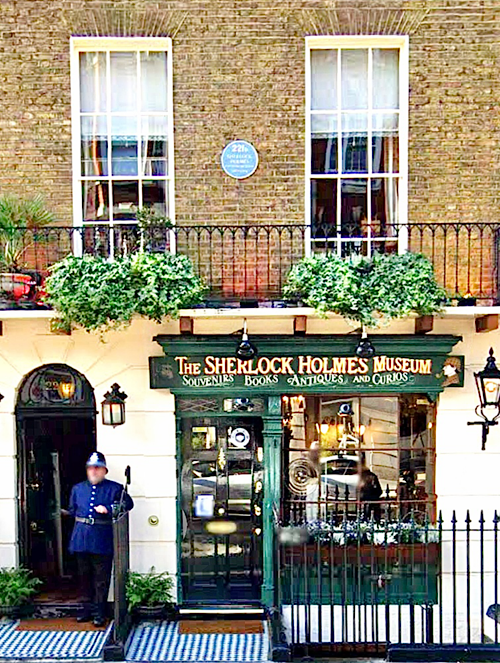
The Sherlock Holmes Museum
image taken from Google Maps
|

|
Arthur Conan Doyle deliberately created a fictional address for the dwelling of Sherlock Holmes. Readers of The Strand Magazine couldn't even locate the vicinity around 221B because the numbers on Baker Street did not reach 200 at the time.
Baker Street was later extended, but 221B still did not exist because there was a large building at that location called Abbey House which took up the space of several numbers including 221.
And Abbey House was definitely NOT a terraced house. If nothing else, this proves that not every building on the street was a terraced house.
The Sherlock Holmes Museum which opened in 1990 has been given special permission to use 221B, but its actual address is 239 Baker Street.
All this to say that neither the address nor the building has ever existed. 221B Baker Street was fictional just like Sherlock Holmes.
Fictional buildings need not conform to buildings that exist.
Had it existed, could it have been a terraced house? The stories rule out that notion as impossible -- which is a hard pill to swallow for those who insist that it must conform to the buildings in the old photos.

|
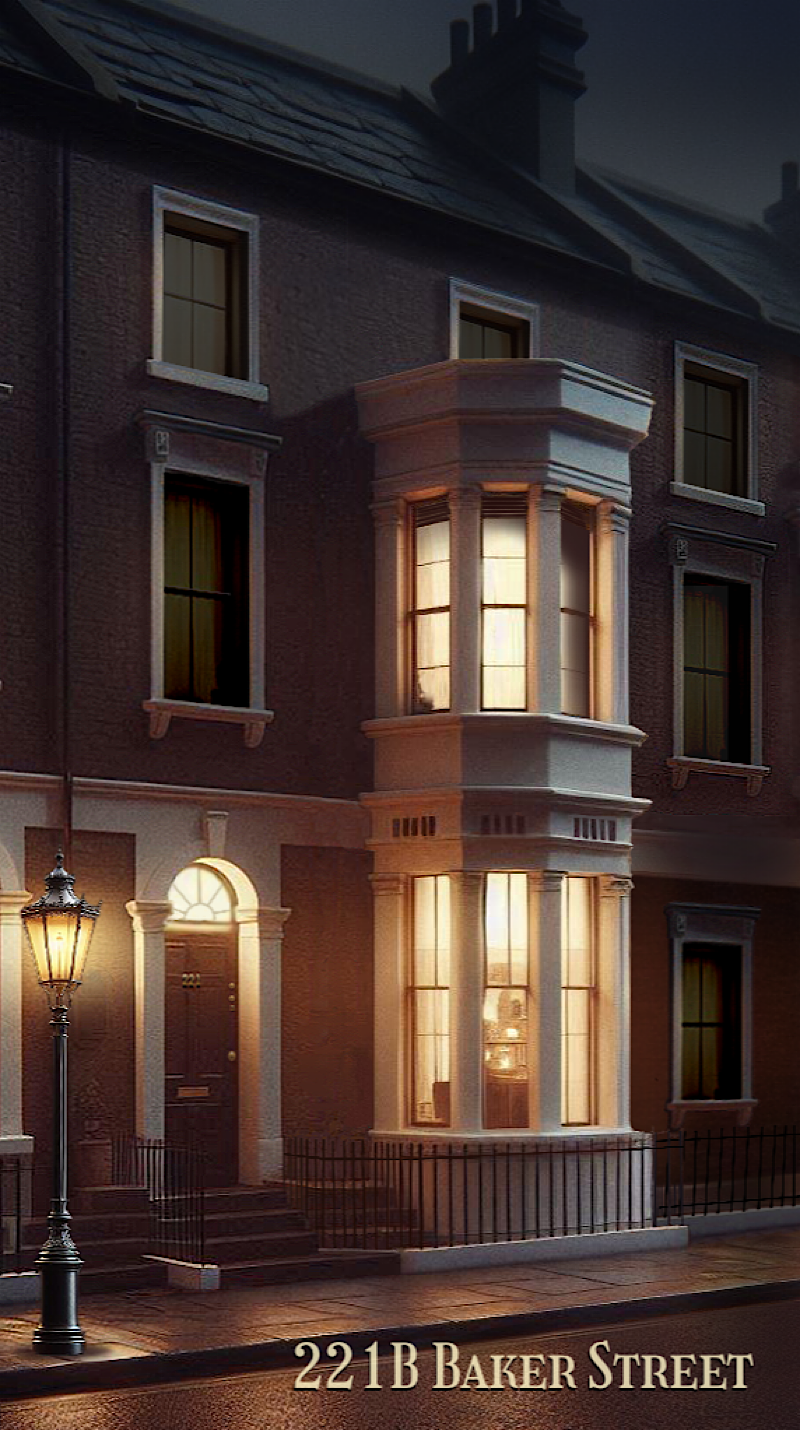
Image generated in 2024 by AI and extensively modified by me

|
And, yes, you saw it coming:
When you have eliminated the impossible,
whatever remains, however improbable,
must be the truth.
As the collection of stories grew, 221B Baker Street emerged as something unlike any other dwelling in London.
The stories give the impression of a relatively small, private and undisturbed dwelling which could serve as the base of operations for his unique and dangerous career. And it had very useful secret exits and passages.
The building was not as deep and did not have as much floor space as a typical terraced house, so Holmes had the opportunity to rent practically all the rooms on the upper floors, save those reserved for Mrs. Hudson and the servant.
And the numbers on the door would have simply been 221; the B would have been placed near a second door bell.
Except for the bow window, this dwelling would have probably not stood out among the rows of common terraced houses which lined Baker Street.
But behind the facade was something that was absolutely unique.
That uniqueness is what compelled me to draw the illustration in the first place. It is a main character in the stories; a unique fictional character that fires the imagination.
Why would anyone would want to ignore all this and make it a common terraced house?
Go to the second half of this article called Fun Facts about Sherlock Holmes
|
Back to the top
Links of interest
Back to the top
|


